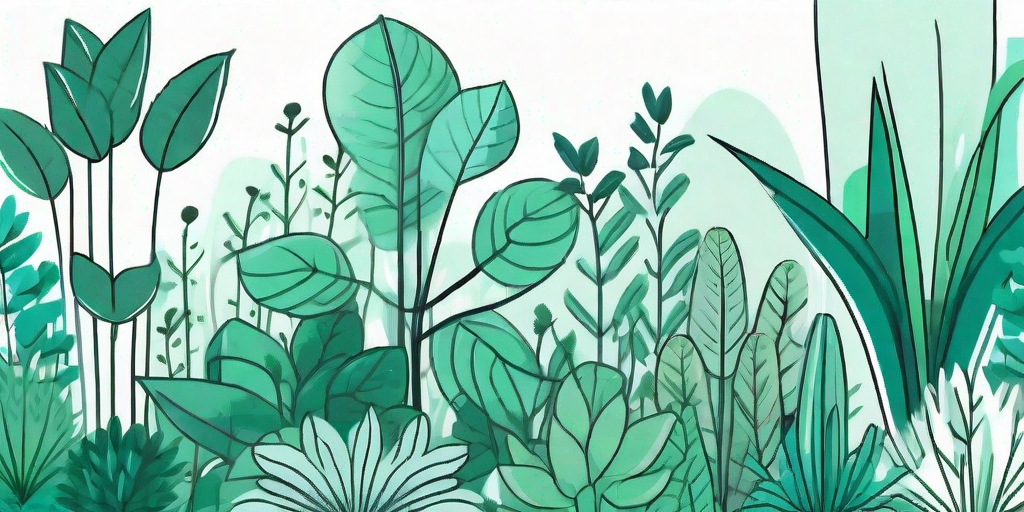
If you've ever looked at your garden and thought, "Why does it look like a wild jungle out there?" or "Why are my plants not producing as much as they should?", then you're in the right place. Plant spacing is an often overlooked aspect of gardening that can make a huge difference in your garden's productivity. So, let's dive in and learn how to turn your garden into a well-organized, high-yielding paradise.
The Importance of Proper Plant Spacing
Before we get into the nitty-gritty of plant spacing, let's first understand why it's so important. You see, plants are a bit like people. They need their personal space to grow and thrive. Too close, and they start to compete for resources. Too far apart, and they can't provide mutual support. It's all about finding the right balance.
Proper plant spacing allows each plant to receive the right amount of sunlight, water, and nutrients. It also helps prevent the spread of diseases and pests, which can easily jump from one plant to another when they're too close. So, if you want a healthy and productive garden, pay attention to your plant spacing.
The Art of Plant Spacing
Now that we've established the importance of plant spacing, let's get down to business. How do you determine the perfect plant spacing for maximum yield? Well, it's part science, part art, and a whole lot of trial and error.
Each type of plant has its own spacing requirements, which are usually provided on the seed packet or plant tag. These are a good starting point, but don't be afraid to experiment a bit. Your garden's specific conditions, such as sunlight, soil type, and climate, can all affect the optimal plant spacing.
General Spacing Guidelines
While each plant is unique, here are some general spacing guidelines to get you started:
- Small plants: These include plants like radishes and carrots. They typically need about 2-3 inches of space between each plant.
- Medium plants: Think tomatoes and peppers. They usually require about 18-24 inches of space.
- Large plants: This category includes plants like pumpkins and watermelons, which need a whopping 36-48 inches of space.
Remember, these are just guidelines. Always check the specific requirements for each plant and adjust as necessary.
Row Spacing
Row spacing is another important consideration. This is the space between different rows of plants. It needs to be wide enough to allow you to walk through without damaging the plants, but not so wide that you're wasting valuable garden space.
A good rule of thumb is to make the row spacing about twice the plant spacing. So, if your plants are spaced 18 inches apart, your rows should be about 36 inches apart. Again, adjust as necessary based on your garden's specific conditions and your personal preferences.
Common Mistakes to Avoid
Even with the best intentions, it's easy to make mistakes when it comes to plant spacing. Here are a few common ones to avoid:
- Overcrowding: This is probably the most common mistake. It's tempting to try to fit as many plants as possible into your garden, but resist the urge. Overcrowded plants will compete for resources and produce less yield.
- Ignoring plant size: Remember, plants grow. That tiny seedling will soon become a full-sized plant. Always consider the mature size of the plant when determining spacing.
- Forgetting about sunlight: Plants need sunlight to photosynthesize and grow. Make sure each plant has enough space to receive adequate sunlight.
By avoiding these common mistakes, you can ensure that your plants have the space they need to grow and thrive.
FAQs
Can I plant different types of plants together?
Absolutely! This is known as companion planting, and it can be a great way to maximize your garden's productivity. Just make sure to research which plants go well together and which ones don't.
What if I don't have a lot of space?
No problem! There are plenty of ways to garden in small spaces. Consider vertical gardening, container gardening, or using trellises to maximize your space.
Can I adjust plant spacing as the plants grow?
Yes, you can. This is known as succession planting. You can start with closer spacing and then thin out the plants as they grow. Just be careful not to disturb the roots of the remaining plants.
Conclusion
Plant spacing might seem like a small detail, but it can have a big impact on your garden's productivity. By giving each plant the space it needs to grow, you can enjoy a healthier, more productive garden. So, go ahead and give your plants some room to breathe. They'll thank you for it!











